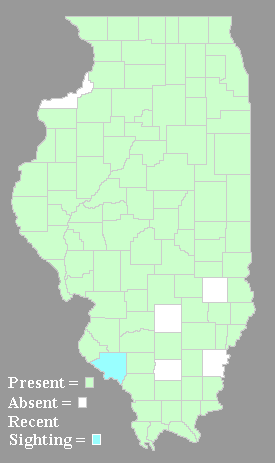Ranunculus septentrionalis
Buttercup family (Ranunculaceae)
Description: This native perennial plant is about 6" tall; it produces basal leaves and stems with alternate leaves that sprawl along the ground. The stems are light green, reddish green, or brownish green, and glabrous to slightly pubescent. The basal and alternate leaves are up to 3" long and across (excluding the petioles). They are trifoliate and hairless. The margins of each leaflet are cleft and dentate. The terminal leaflet has a longer petiolule (a stalk at its base) than either of the lateral leaflets. There is some variability in how broad and deeply cleft the leaflets are.

Occasionally, a single flower develops from an unbranched stalk about 4-6" long. This stalk is more or less erect and glabrous to pubescent. The flower spans about ¾–1" across, consisting of 5 yellow petals, 5 light green sepals, numerous yellow stamens, and a cluster of pistils in the center of the flower. The base of each petal is pale greenish yellow with about 5 fine lines functioning as nectar guides; the remainder of the petal is bright yellow and shiny. The well-rounded petals are longer than the sepals. The blooming period occurs from mid-spring to early summer and lasts about 1½ months. After the petals fall away, each pistil develops into a flattened achene with a long beak; this achene is up to 3.5 mm. in length. The root system consists of a tuft of fibrous roots. The stems are somewhat stoloniferous and can root in the ground. Swamp Buttercup reproduces by seeds and vegetatively; it often forms loose colonies of plants at favorable sites.
Cultivation: The preference is partial sun to light shade, slightly wet to mesic conditions, and a fertile loamy soil with some leaf mould. Standing water from spring rain is tolerated if it is temporary.

Range & Habitat: Swamp Buttercup is a common plant that occurs in most counties of Illinois. Habitats include moist to mesic deciduous woodlands, soggy areas along vernal pools, swamps, partially shaded areas of seeps, and edges of woodland springs. This species often grows in soggy areas of woodlands that are too wet for some invasive species, such as Alliaria petiolata (Garlic Mustard). Therefore, populations of Swamp Buttercup remain robust.
Faunal Associations: The flowers attract their fair share of flower visitors, including bees (Little Carpenter, Mason, Halictid, & Andrenid), flies (Syrphid, bee flies, Anthomyiid, & other), skippers, and various beetles. These insects suck nectar, while the beetles usually feed on pollen. Some bees also collect pollen. The foliage of Ranunculus spp. (Buttercups) is more or less toxic and avoided by mammalian herbivores. However, their seeds are eaten to a limited extent by the Wild Turkey, Cottontail Rabbit, Fox Squirrel, Gray Squirrel, Eastern Chipmunk, and Meadow Vole. The Wild Turkey also browses on the foliage of Buttercups, notwithstanding its toxicity.
Photographic Location: A moist deciduous woodland at Busey Woods in Urbana, Illinois.
Comments: With the exception of the weedy Ranunculus abortivus (Small-Flowered Buttercup), this is probably the most commonRanunculus spp. in Illinois. It is possible to confuse Swamp Buttercup with similar species, especially Ranunculus hispidus (Hispid Buttercup),Ranunculus carolinianus (Carolina Buttercup), and the introduced Ranunculus repens (Creeping Buttercup). Unlike Swamp Buttercup, the stems of Hispid Buttercup have spreading hairs and they are not stoloniferous. Carolina Buttercup is supposed to have longer achenes (3.5–5.0 mm. in length) than the preceding two species, however its status as a separate species is debatable. Some authorities consider Swamp Buttercup and Carolina Buttercup to be different varieties of Ranunculus hispidus (Duncan & Duncan, 1999; Yatskievych, 2000), although Mohlenbrock (2002) doesn't. Creeping Buttercup has stoloniferous stems like Swamp Buttercup, but its leaves are less deeply cleft and often splotched with white, while its achenes are less flattened than those of Swamp Buttercup.
Additional Links:
http://www.illinoiswildflowers.info/woodland/





No comments:
Post a Comment